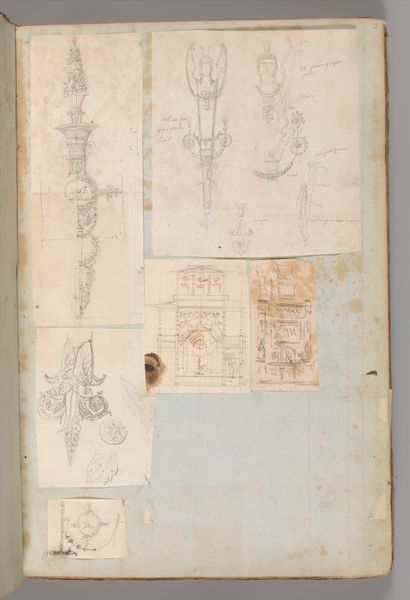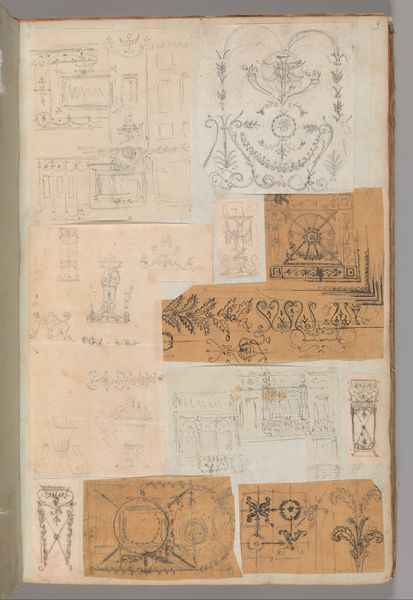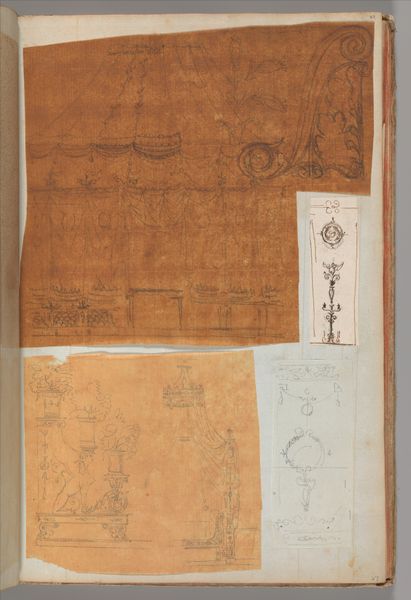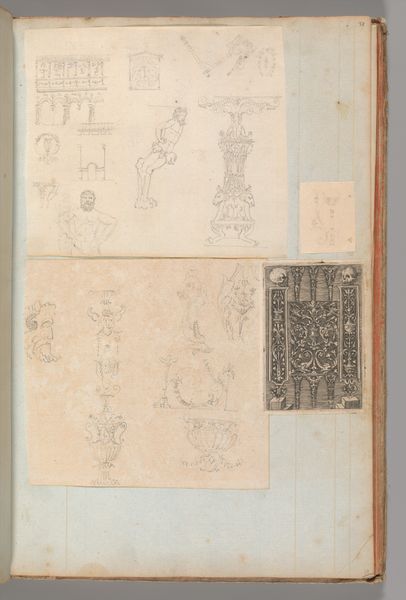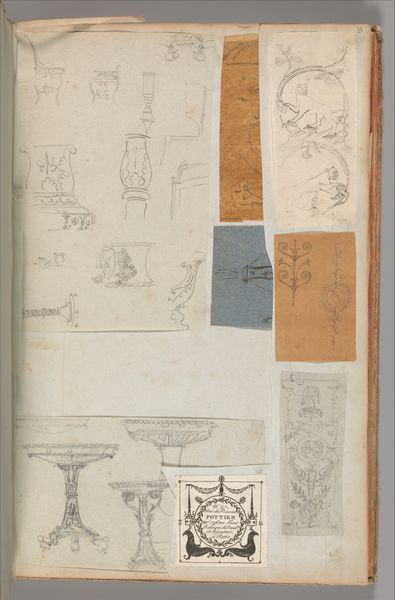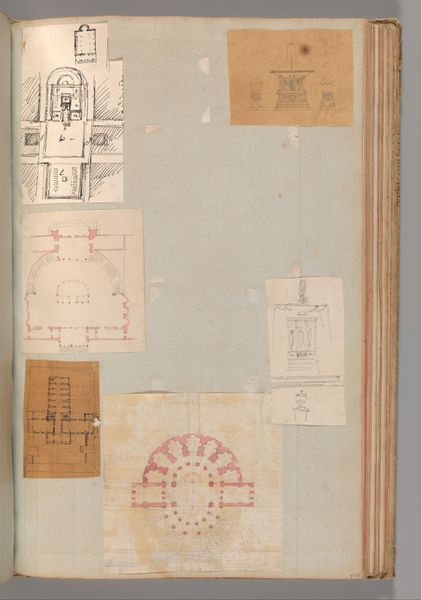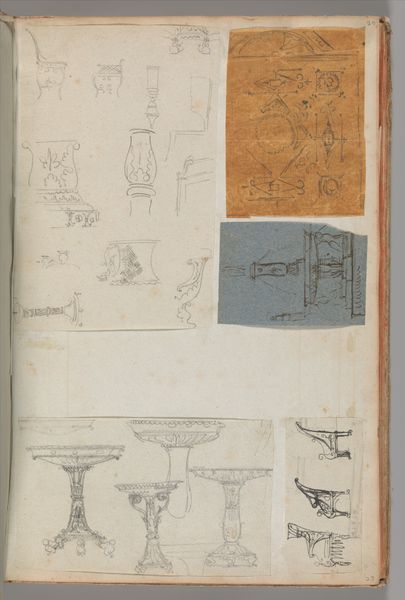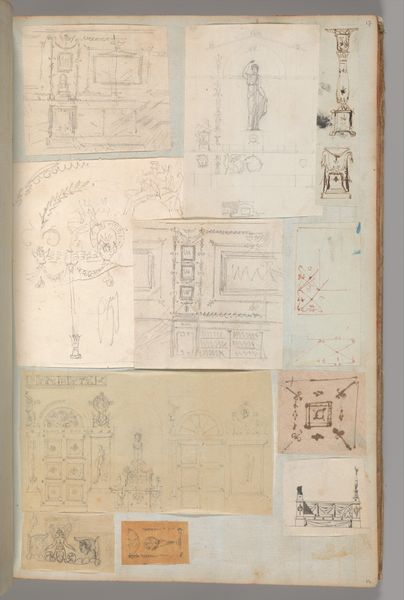
Page from a Scrapbook containing Drawings and Several Prints of Architecture, Interiors, Furniture and Other Objects 1795 - 1805
0:00
0:00
drawing, print, architecture
#
drawing
#
neoclacissism
# print
#
line
#
architecture
Dimensions: 15 11/16 x 10 in. (39.8 x 25.4 cm)
Copyright: Public Domain
Curator: This is a fascinating page from a scrapbook by Charles Percier, dating from 1795 to 1805, currently housed in the Metropolitan Museum of Art. It features a medley of drawings and prints detailing architecture, interiors, furniture, and other decorative objects, all rendered with precise lines. Editor: My immediate impression is one of lightness, and a certain… austerity. Despite the ornate subjects, the overall effect is surprisingly restrained. The monochromatic palette contributes to this feeling, as do the delicate lines. Curator: The scrapbook page epitomizes Neoclassical aesthetics, which became popular at the time. Percier's devotion to symmetry and geometric shapes is unmistakable in the rendering of these objects. The clear organization reveals his artistic intentions and influences during this period. Editor: Looking at the assortment, the arrangements suggests a society deeply engaged with design, but perhaps also constrained by particular cultural values, no? It also raises the interesting issue of accessibility—who has the ability to engage with and acquire these goods? Curator: That's insightful. Percier was extremely influential in shaping design. It’s compelling to consider that Percier intended his ideas to be replicated widely, possibly by those aspiring to social mobility through art and material objects. His visual syntax is easy to implement by a wide range of practitioners. Editor: And perhaps a move away from more "frivolous" aristocratic design preceding it. I notice the frequent classical motifs - draped figures, architectural columns - there's a clear emphasis on seriousness and order here, wouldn’t you agree? A visual representation of political and social aspiration toward “Republican virtues?” Curator: Precisely. Through its design, Percier subtly conveyed societal ambitions. Note the woman hoisting an entire chandelier. His deliberate construction offers insight into his design ethos. It’s not just decorative, but intellectual, offering us clues about prevailing philosophical ideals. Editor: This scrapbook page isn’t just a historical artifact; it’s a collection of ambitions, reflecting and also actively constructing the values of a whole era. Curator: An era indeed captured deftly using just the simplest of marks to yield so much data.
Comments
No comments
Be the first to comment and join the conversation on the ultimate creative platform.


